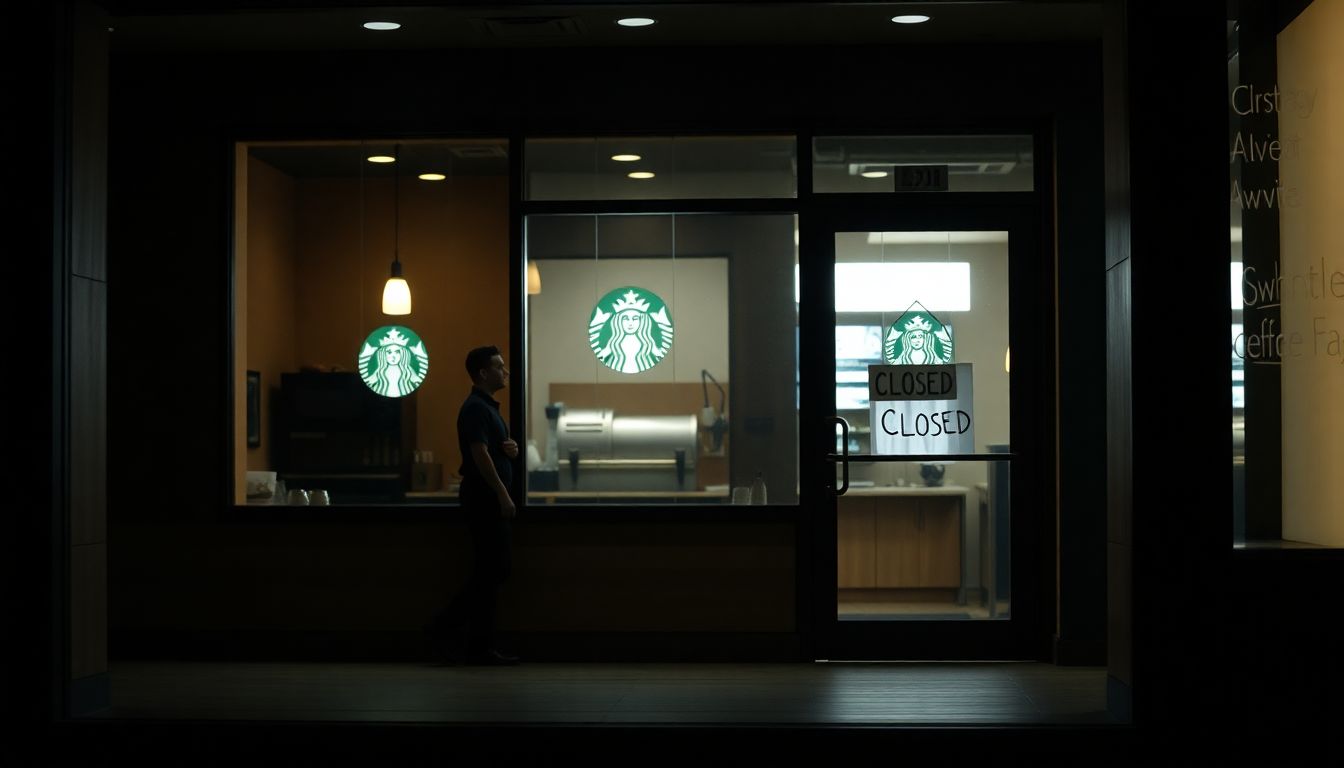
Starbucks has decided to end its open-door policy, marking a significant change in its approach. This move raises many questions about what it means for customers, employees, and the brand's future.
The Decline of the Open Door: Starbucks' Shifting Strategy
The Rise and Fall of the "Third Place" Ideal
For years, Starbucks embraced the idea of being a “third place” where customers could relax and socialize. This concept attracted many, making Starbucks more than just a coffee shop. However, this ideal has faced challenges as circumstances have evolved.
Shifting Consumer Behavior and Expectations
Today's customers are different. They expect convenience and speed. Many prefer getting in and out quickly instead of lingering. As a result, Starbucks must rethink how it serves its patrons to stay relevant.
Financial Pressures and Operational Efficiency
Financial concerns have risen, pushing Starbucks to focus on operational efficiency. The previous open-door model made it harder to manage customer flow and staffing effectively. Consequently, the company has opted for a more controlled environment to sustain profit margins.
Security Concerns: A Driving Force Behind the Change
Increased Incidents of Theft and Vandalism
Starbucks locations have experienced a surge in theft and vandalism in recent years. This poses a threat not only to property but also to the overall ambiance of the store. Locked doors can help deter such incidents.
Employee Safety and Well-being as a Priority
The safety of employees is a top priority for Starbucks. By limiting access to their stores, Starbucks aims to create a safer work environment for baristas and staff. This action reflects a growing concern about workplace safety across industries.
The Role of Technology in Enhanced Security Measures
Starbucks is embracing technology to improve security. To monitor entry points effectively, they may use cameras and other tech tools. This integration will help maintain a secure atmosphere for everyone.
Impact on Customers: Altered Experience and Accessibility
Changes to Ordering and Service Models
With the shift away from the open-door policy, how customers order and receive their coffee will change. More emphasis will be placed on mobile orders and drive-thru services. Expect longer wait times if you choose to enter the store.
Impact on Accessibility for Disabled Individuals and Vulnerable Populations
Locking the doors may raise issues for customers with disabilities or those who need extra assistance. Starbucks must ensure access for everyone while maintaining security.
The Public's Reaction: Social Media Sentiment Analysis
Reactions on social media have varied. Some applaud the changes for prioritizing safety, while others see it as a loss of community spirit. Monitoring public sentiment will help Starbucks respond effectively.
Implications for Starbucks Employees: New Protocols and Training
Changes to Employee Workflows and Responsibilities
New procedures will alter how staff members operate. Employees may need training to adapt to the new service models. This change could add to their workload.
Impacts on Employee Morale and Job Satisfaction
The new protocols may affect employee morale. Some may feel more secure, while others may find the shift challenging. Keeping communication open will be crucial for maintaining a motivated workforce.
Union Reactions and Collective Bargaining
Unions are closely watching these changes. They want to ensure the rights and needs of employees are met. Collective bargaining efforts may ramp up as discussions unfold.
The Future of Retail Accessibility and Security
Industry Trends and Best Practices
Other retailers may follow Starbucks' lead. Trends in security and customer access are evolving. Companies must find a balance that keeps both safety and experience in mind.
The Balance Between Accessibility and Security
Striking a balance between accessibility and security will be key. Retailers need to ensure everyone feels welcome while protecting their patrons and employees.
Technological Innovations in Retail Security and Customer Service
Innovations in technology will play a significant role in shaping the future. AI, mobile apps, and contactless payments can enhance customer experiences while maintaining safety protocols.
Conclusion: Navigating the Changing Landscape of Retail
Key Takeaways and Analysis of Starbucks' Decision
Starbucks’ end of the open-door policy marks a shift in strategy. This decision addresses security concerns while also responding to changing customer behaviors.
The Long-Term Effects on the Customer Experience
Altered customer experiences will redefine how patrons interact with Starbucks. Some may appreciate the increased security, while others may miss the open environment.
Predictions for the Future of Starbucks and Similar Businesses
As Starbucks navigates this new approach, other businesses must observe and adapt to these changes. The future could bring more innovative solutions for security and customer experience in retail spaces.
Embracing change is essential for survival in the competitive landscape of retail. The key will be balancing safety with the welcoming essence that has long defined the Starbucks experience.
https://newfactsonly.blogspot.com/



